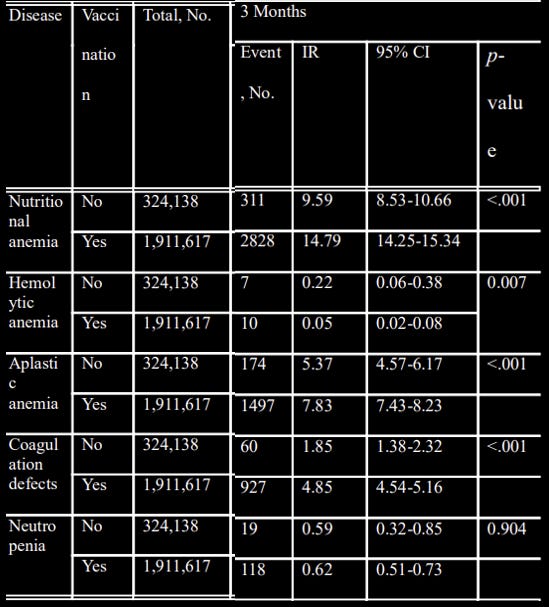The Korean Study – relative harms between vaxxed and unvaxxed - a small portion of what the health authorities and politicians globally DO NO WANT YOU TO SEE
Reviewed in the Hatchard report here:
Korean Studies Indicate What Our Government is Hiding (mailerlite.com)
“The researchers concluded:
“This study demonstrated the haematologic adverse events associated with COVID-19 vaccination using real-world data. The cumulative incidence rate of nutritional anaemia, aplastic anaemia, and coagulation defects significantly and constantly increased for 3 months after the COVID-19 vaccination compared to the non-vaccinated group.”
Yje Korean study “Retrospective cohort analyses of data from the Korean National Health Insurance Service (KNHIS) database were conducted from July 2022 to August 2023.
We randomly selected data of half of those living in Seoul City as of January 1, 2021 with their diagnostic records up to December 31, 2021. The included participants were vaccinated and nonvaccinated persons aged 20 years or older (n= 4,203,887). “
“The final study sample of vaccination group after excluding those with target disease by the index date was 1,911,617.
Of 364,873 nonvaccinated individuals, after excluding deaths by September 30, 2021 and those with target disease by the index date, 324,138 individuals were included (Figure S1).”
Here’s the doses administered by manufacturer – no significant differences were found by manufacturer - for blood disorders in the study.
COVID-19 vaccine doses administered by manufacturer, South Korea (ourworldindata.org)
Blood disorders after 3 months from this PRE_PRINT study dated 22 November 2023, I have skipped the intervening dates :
ABLE 2. Incidence rate of hematologic abnormalities over time after vaccination
The p values are all close to zero, which indicates “not due to luck”.
Check out the IR = Incidence Rate of coagulation defects – 1.85 per million for the unvaxxed and 4.85 for the vaxxed.
Here is another PRE-PRINT study with the same date, not much to see there:
Correlation between COVID-19 vaccination and inflammatory musculoskeletal disorders (medrxiv.org)
As Hatchard states:
Who do you believe? The researchers in Korea who have published analysis of millions of post vaccination health records officially made available by their government or our government who are still refusing to make health records available whilst insisting that Covid vaccination is safe and effective?”
Onwards!
Please subscribe or donate via Ko-fi – any amount from 3 bucks upwards. Don’t worry and God Bless, if you can’t or don’t want to. Ko-fi donations here: https://ko-fi.com/peterhalligan - an annual subscription of 100 bucks is one third less than a $3 Ko-fi donation a week!





There is considerably more comparative commentary to be made here, which Hatchard may have overlooked. There are 'contra' Korean studies that clearly seek to obscure what this more recent (Choi et al. Nov 2023) study pre-print) you cite here suggests. Indeed, Choi et al. may not make it to the dim illumination of the controlled literature.
On the other hand, the recent retrospective cohort study published (Oct 06, 2023) in JAMA Network Open (Autoimmune and Autoinflammatory Connective Tissue Disorders Following COVID-19 ~ Lim SH et al.) spins altogether quite another yarn. Here this research group purports to show when stratified by vaccination status, a greater risk of autoimmune diseases in the unvaccinated group, while suggesting that in the vaccinated subgroups increased risks were diminished for both autoimmune and positive control outcomes. Studying their analysis further, one notes that the COVID-19 vaccination status is reported as follwos (see supplemental table where the devil is usually buried in the detail): "Controls" and "COVID-19" groups contain homogenised vaccine / non-vaccine recipients.
COVID-19 (n=192,854) 30% vaccinated once; 70% non-vaccinated
CONTROL (n=3,372,056) 41% vaccinated once; 59% non-vaccinated
There appears here an intentional obfuscation of what we have come to learn and is well recognised in the growing body of harms literature.
Well done, Peter! Thanks for drawing this to my attention!